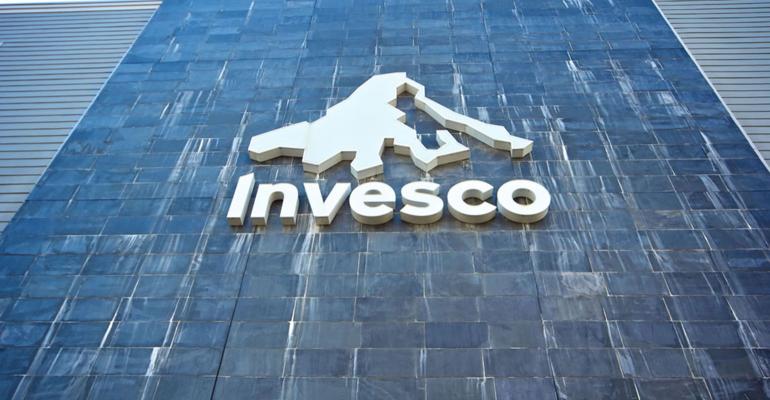By Nir Kaissar
(Bloomberg Gadfly) --Guggenheim Investments announced last week that it was selling its ETF business to Invesco Ltd., but it left out the most interesting part.
The Financial Times reported on Sunday that Guggenheim wanted to sell all of its retail funds to Invesco, including its mutual funds and unit investment trusts. Invesco was interested only in the ETFs.
Invesco’s chief executive officer, Martin Flanagan, explained to the FT that there was too much overlap between Guggenheim and Invesco’s mutual funds but that Guggenheim’s ETF business “is so complementary” to Invesco’s.
That may be true. It’s also true that ETFs are hot and mutual funds are not. Still, building a significant ETF presence may be harder than Invesco is acknowledging.
Fund providers are racing to cash in on the surging popularity of ETFs. According to Bloomberg Intelligence, ETFs have taken in $330 billion in assets through September, easily topping last year’s record of $291 billion.

Granted, mutual funds still have more money than ETFs, but ETFs are quickly gaining ground. According to Morningstar Direct, ETFs gathered $818 billion since 2015 through August, compared with just $114 billion for open-end mutual funds.
The number of ETFs chasing those flows is growing, too. ETFs account for 23 percent of the combined number of open-end mutual funds and ETFs as of August, but only 18 percent of the assets. That divergence has tripled since 2007.

Invesco’s acquisition of Guggenheim’s $37 billion ETF business undoubtedly gives it a boost in an increasingly crowded market. But as my Bloomberg Intelligence colleague Eric Balchunas points out, “Organically growing ETF assets is beyond difficult these days.” It’s not clear how Guggenheim’s ETFs are any help.
The problem is that most of the flows have gone to three ETF providers, and neither Invesco nor Guggenheim are among them. According to research firm ETF.com, BlackRock’s iShares, Vanguard and State Street manage roughly $2.6 trillion of the $3.1 trillion invested in ETFs as of September, or 84 percent of ETF assets.

It’s not an accident that the Big Three have scooped up most of the flows. Investors are down on active management, including systematic active strategies known as smart beta. Instead, they’re putting their money in cheap, market-cap weighted index funds.
The Big Three have the size and scale to give investors what they want. Consider that 38 of the 40 ETFs with the largest asset flows this year are cap-weighted ETFs, and all but three of them are BlackRock, Vanguard or State Street ETFs.

Invesco and Guggenheim and the other 82 ETF providers have tried to compete by offering more expensive smart beta and other niche ETF strategies, such as sector, commodity, leveraged and inverse ETFs. But there’s only so much interest and capacity in those strategies, which limits their size.
And size matters when it comes to ETFs. Smaller ETFs tend to be more thinly traded and costlier to purchase. Their bid-ask spreads -- the difference between what a buyer will pay and what a seller will accept -- are wider. Investors must also worry about moving the price of thinly traded ETFs when buying or selling large quantities.
Despite those challenges, Invesco is doubling down on its strategy with the acquisition of Guggenheim’s ETFs. After the acquisition, Invesco will remain in distant fourth place on the ETF league table, with a stable of smaller, more expensive niche ETFs.
Which isn’t to say that Invesco’s strategy won’t pay off. The majority of fund assets remain in even more expensive actively managed mutual funds. If investors in those funds decide to dump traditional active managers in favor of the smart beta bots, Invesco could be a big winner.
It’s an expensive gamble, however. According to Morningstar data, the asset-weighted expense ratio of Guggenheim’s ETFs is 0.31 percent. That translates into roughly $113 million in annual revenue on Guggenheim’s $37 billion of ETF assets. Assuming a profit margin of 21 percent on those ETFs -- which is the current margin for the Dow Jones US Asset Managers Index -- Invesco can expect to earn roughly $24 million a year on Guggenheim’s ETF business.
Invesco will pay $1.2 billion for Guggenheim’s ETFs, which translates into a price-to-sales ratio of 10.6 and a price-to-earnings ratio of 50.6. Those same multiples for the Asset Managers Index are 3.9 and 18.2, respectively.
The lesson here is one that Guggenheim has implicitly acknowledged and I suspect Invesco will come to accept: There are no shortcuts in the ETF game.
This column does not necessarily reflect the opinion of Bloomberg LP and its owners.
Nir Kaissar is a Bloomberg Gadfly columnist covering the markets. He is the founder of Unison Advisors, an asset management firm. He has worked as a lawyer at Sullivan & Cromwell and a consultant at Ernst & Young.
To contact the author of this story: Nir Kaissar in New York at [email protected] To contact the editor responsible for this story: Daniel Niemi at [email protected]





